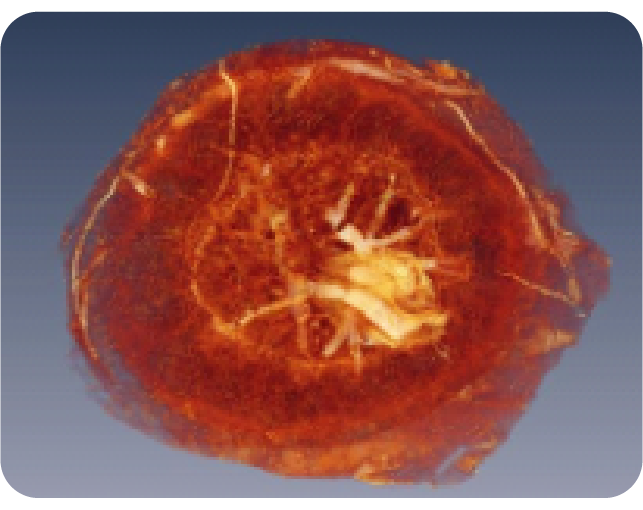MRI investigations of placental structure and function
Preeclampsia is a medical condition affecting up to 3% of pregnant women in Australia. Characterised by high blood pressure and protein in the urine, it is a leading cause of morbidity and mortality in both mothers and infants. Furthermore, preeclampsia has been linked to long-term health consequences for both mother and child.

Hampering early diagnosis, prevention, and treatment efforts is a lack of understanding of preeclampsia pathophysiology. Currently, the cause of this condition is unknown. Prof Annemarie Hennessy and a team of researchers at Western Sydney University are utilising the WSU NIF Node, in collaboration with NIF Fellow Dr Timothy Stait-Gardner, to learn more about this serious condition.
In this project, high-resolution magnetic resonance imaging is being used to examine placental changes in vivo in mouse models of preeclampsia. In addition to the in vivo studies, high-resolution scans of fixed mouse placentas, normal and abnormal, have been used to create a placental atlas. The creation of a placental atlas and a number of publications have provided important information on mouse models of preeclampsia, including its characterisation and how to differentiate between different models of preeclampsia from T2 maps of the mouse placentas. These works have provided some of the basis for investigations of new treatments of preeclampsia.
Publications:
- https://journals.plos.org/plosone/article?id=10.1371/journal.pone.0059971
- https://www.ncbi.nlm.nih.gov/pubmed/29943952
- https://www.physiology.org/doi/full/10.1152/ajpregu.00331.2016
- https://onlinelibrary.wiley.com/doi/full/10.1111/1440-1681.13169
This story was contributed by the Western Sydney University NIF Node. For further information, please contact Dr Timothy Stait-Gardner.



